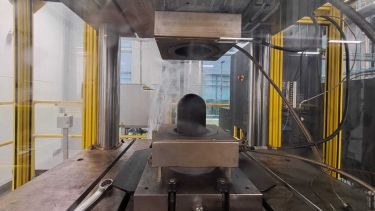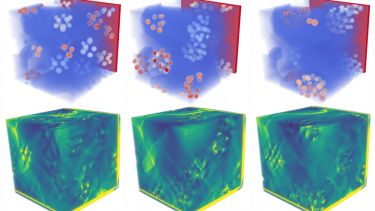There is a heightened demand for lightweight, cost-effective vehicle components due to the potential to reduce greenhouse gas emission and bolster the electric vehicle industry. This has lead to an emphasis on research into recycled aluminium alloys.
The process of recycling aluminium however, inevitably introduces impurities which can significantly impact on the resulting alloy's formability. Being able to control and understand the impact of these impurities on the microstructure of the alloy is pivotal. Experimentation and advance simulations utilising the DAMASK crystal plasticity method alongside empirical data allows the evaluation of stress concentration within distinct microstructures under uniform loading. Cao's research aims to formulate refined Representative Volume Element (RVE) models to enhance prediction accuracy to ultimately advance the formability of recycled aluminium alloys.
Reducing the weight and increasing the use of highly recyclable materials in automotive applications is key to reducing emissions and making electric vehicles more efficient, more sustainable and more cost efficient.
The benefits of recycled aluminium include lower energy use (2.8 kWh/kg vs. 45 kWh/kg for primary production) and environmental gains. Aluminium's weight advantage (over 40% lighter than steel) impacts fuel consumption (5-6% reduction per 10% vehicle weight decrease). However, impurity elements introduced during recycling, like iron, manganese, and silicon, form intermetallic compounds (IMCs), affect final mechanical properties.
Cao's study addresses IMC-induced heterogeneity's impact on alloy formability. It employs a combined approach of experiments and simulations. The experimental aspect involves analysing the microstructure and mechanical properties data of recycled aluminium alloy AA6111, providing a basis for parameter optimisation and model validation. Simulations aid in understanding particle effects on formability via predicted Forming Limit Diagrams (FLD) during different strain paths. Additionally, Digital Image Correlation (DIC) augments understanding of microstructure-mechanical response correlation. Comparison between predicted FLD for recycled 6xxx aluminium and experimental Nakajima forming test results, analysed with DIC, enriches the investigation. A modelling workflow predicts formability in synthetic microstructures of recycled aluminium with distinct orientations, volume fractions, distributions, and morphology, offering feasible solutions to the research problem.
This research holds industrial significance in several aspects:
Firstly, it unveils the influence patterns of iron-manganese-silicon compound particles in recycled aluminium alloys on localised heterogeneous responses. This serves as a theoretical underpinning for optimising heat treatment processes to enhance formability through controlled inclusion quantity and distribution.
Secondly, it establishes a crystal plasticity model capable of predicting the forming limits of recycled aluminium alloys. This can guide process design and forecast forming performance under different parameters, facilitating optimal material property design.
Lastly, the study examines the effect of inclusions on pore development within recycled aluminium alloys, explaining the relationship between fracture mechanisms and inclusions. This provides a theoretical foundation for enhancing fracture toughness.
Cao completed an MSc with Distinction in Advanced Engineering Materials at The University of Manchester and was awarded Bachelor Degree in Physics from both Jilin University (China) and Tomsk Polytechnic University (Russia), and is now completing a PhD at The University of Manchester which focuses on the effects of intermetallic compound particles on the formability and mechanical properties of the recycled 6xxx alloy, using the Python programming and CPFEM to gain an understanding of effect of primary particle size distribution, volume fraction and spatial distribution of intermetallic particles on recycled 6xxx series aluminium alloys and try to improve the ductility and formability of them.
My research project has been a significant undertaking, and its progress has been exceptionally gratifying. The utilization of Royce's state-of-the-art facilities has played a pivotal role in facilitating the successful execution of my research objectives. The resources provided by Royce have been instrumental in enabling the precise collection of data, conducting rigorous experiments, and ultimately achieving substantial results. To date, I am delighted with the outcomes of my work, which have contributed valuable insights to the field of microstructural effects on aluminum deformation.
Zhenjie Cao
University of Manchester



